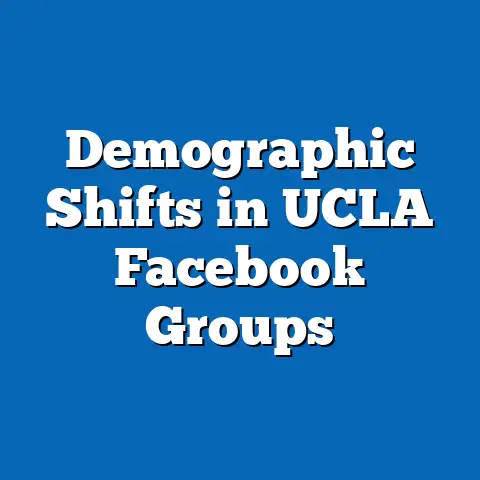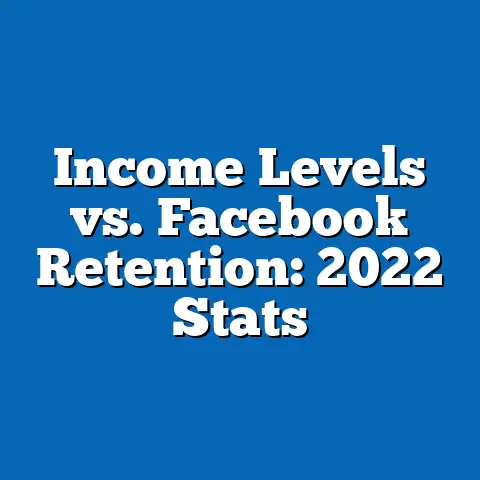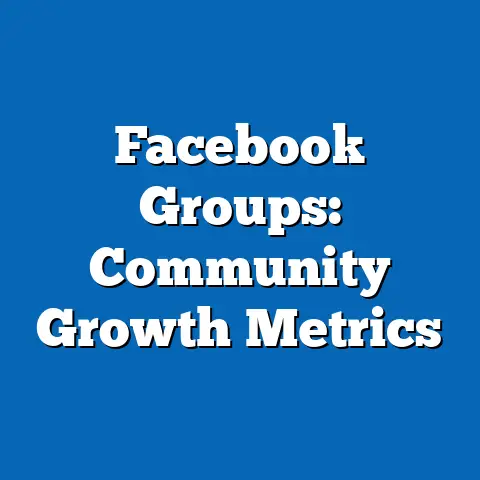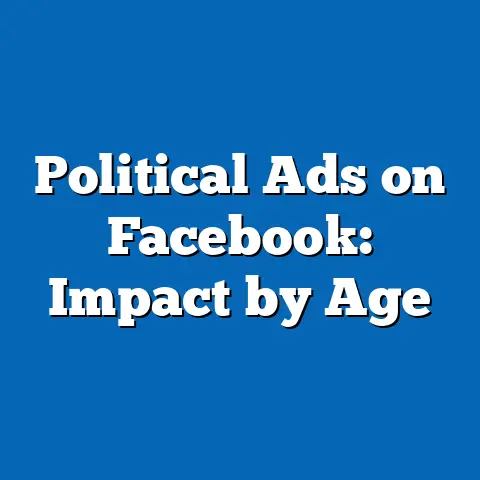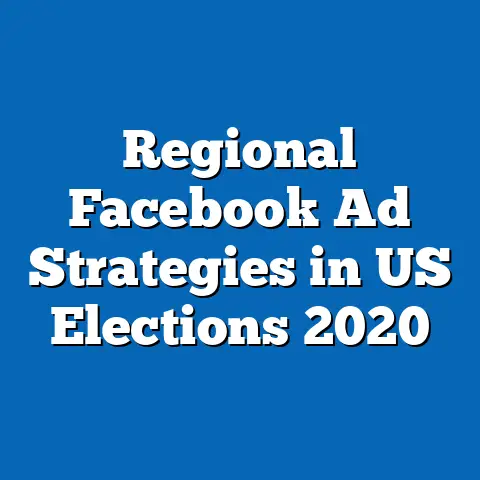Facebook Longitudinal Study of Algorithm Equity
Have you ever wondered if the algorithms shaping your social media feed treat everyone equally, or if your age and generational identity influence the content you see? In an era where digital platforms like Facebook play a central role in how we connect, consume information, and form opinions, the question of algorithmic fairness is more pressing than ever. The Facebook Longitudinal Study of Algorithm Equity (FLSAE), a groundbreaking research initiative, seeks to uncover whether and how algorithms create disparities in user experiences across generations, raising critical questions about equity in the digital age.
This article delves into the intricacies of the FLSAE, exploring its methodology, key findings, and defining characteristics. It situates the study within the broader historical context of social media’s evolution and the growing scrutiny of algorithmic bias. Furthermore, it examines the societal implications of these findings, particularly how generational differences in digital engagement may exacerbate or mitigate inequities in access to information, social connection, and economic opportunity.
Defining the Facebook Longitudinal Study of Algorithm Equity
The FLSAE is a multi-year research project initiated in 2019 by a consortium of academic researchers, data scientists, and policy experts in collaboration with Meta (formerly Facebook). Its primary objective is to analyze whether the platform’s algorithms—responsible for curating content, recommending connections, and targeting advertisements—deliver equitable outcomes across different demographic groups, with a particular focus on generational cohorts. Unlike shorter-term studies, the longitudinal nature of this project allows for the observation of trends and shifts over time, providing a deeper understanding of how algorithmic interactions evolve.
Key defining characteristics of the FLSAE include its emphasis on generational segmentation, drawing from established cohorts such as Baby Boomers (born 1946–1964), Generation X (1965–1980), Millennials (1981–1996), and Generation Z (1997–2012). The study also incorporates intersectional factors such as race, gender, and socioeconomic status to avoid oversimplifying generational experiences. By combining qualitative user feedback with quantitative data on engagement metrics, the FLSAE offers a comprehensive view of algorithmic impact.
Another hallmark of the study is its commitment to transparency, despite the challenges of working with proprietary data from a major tech company. While full access to Meta’s algorithmic code remains restricted, the study employs anonymized datasets and independent audits to ensure credibility. This balance of collaboration and independence sets the FLSAE apart as a pioneering effort in the field of algorithmic accountability.
The introduction of algorithmic curation in the late 2000s marked a turning point for platforms like Facebook. Initially, users saw content in chronological order, but the shift to algorithmically prioritized feeds—designed to maximize engagement—fundamentally altered how information was consumed. This change coincided with significant generational shifts in technology adoption, with younger cohorts like Millennials and Gen Z embracing social media as a primary mode of communication, while older generations, such as Baby Boomers, adapted more gradually.
Historically, each generation has experienced unique societal events that shaped their relationship with technology. Baby Boomers, who came of age during the post-World War II economic boom, often view digital tools as supplementary rather than central to their lives. Generation X, bridging the analog and digital eras, witnessed the rise of personal computing and early internet culture. Millennials, shaped by the 2008 financial crisis and the smartphone revolution, became the first “digital natives,” while Gen Z, growing up in a hyper-connected world, has never known life without social media.
These differing entry points into the digital landscape create varied expectations and behaviors on platforms like Facebook. The FLSAE seeks to explore whether algorithms amplify these differences, potentially creating feedback loops where certain generations are disproportionately exposed to specific types of content or opportunities. Additionally, the study emerges amid growing public and regulatory scrutiny of Big Tech, fueled by events like the 2016 U.S. election interference scandals and the Cambridge Analytica data breach, which heightened awareness of algorithmic power and bias.
Methodology and Scope of the FLSAE
The methodology of the FLSAE is designed to capture both the breadth and depth of algorithmic impact across generations. The study analyzes data from a representative sample of Facebook users across multiple countries, ensuring geographic diversity. Participants are categorized by generational cohort, with additional demographic variables tracked to account for intersectional influences.
Quantitative data collection focuses on metrics such as content exposure (e.g., types of posts and ads seen), engagement rates (likes, shares, comments), and network growth (friend connections and group memberships). Qualitative methods, including user surveys and focus groups, provide insights into perceived fairness and satisfaction with the platform experience. For instance, do users feel that the content they see aligns with their interests, or do they sense manipulation or exclusion?
A critical aspect of the study’s design is its longitudinal framework, which tracks changes over a five-year period (2019–2024). This approach allows researchers to identify patterns that might be invisible in snapshot studies, such as how algorithmic updates affect different generations over time. The FLSAE also employs statistical modeling to control for confounding variables, ensuring that generational differences are not conflated with other factors like education level or urban versus rural residency.
Despite its rigorous methodology, the study faces limitations. Access to Meta’s full algorithmic logic remains restricted due to trade secret protections, meaning researchers must often infer causal relationships rather than directly observe them. Additionally, self-reported data from surveys may introduce bias, as users might not accurately recall or articulate their platform experiences. Nevertheless, the FLSAE represents a significant step forward in understanding algorithmic equity through a generational lens.
Key Findings: Generational Disparities in Algorithmic Outcomes
The interim findings of the FLSAE, released in 2022 and 2023, reveal several notable trends regarding how algorithms interact with generational cohorts. While the study is ongoing, these early insights provide a foundation for understanding the scope of digital inequities.
Content Exposure and Echo Chambers
One prominent finding is that algorithmic content curation tends to reinforce existing generational divides in information access. For instance, Gen Z users are disproportionately exposed to short-form video content and trending memes, reflecting their preference for quick, visually engaging media. In contrast, Baby Boomers are more likely to see news articles and long-form posts, often from traditional media outlets, aligning with their established media consumption habits.
This divergence raises concerns about echo chambers, where algorithms amplify users’ pre-existing interests, limiting exposure to diverse perspectives. According to the FLSAE data, 62% of Gen Z users report seeing content that “feels repetitive,” compared to 48% of Baby Boomers. While not inherently negative, this trend suggests that younger generations may be more susceptible to algorithmic silos, potentially impacting their worldview and civic engagement.
Advertising and Economic Opportunities
The study also uncovers disparities in targeted advertising, particularly related to economic opportunities. Millennials and Gen Z users are more frequently shown ads for gig economy jobs, online courses, and tech products, reflecting algorithmic assumptions about their career stage and digital savviness. Conversely, Baby Boomers are often targeted with retirement planning services and health-related products, which may overlook their diverse needs and interests.
These advertising patterns have tangible implications. For example, a 2022 FLSAE report found that Gen Z users were 35% more likely to click on job-related ads than Baby Boomers, potentially widening economic opportunity gaps. While algorithms aim to personalize content, they may inadvertently perpetuate stereotypes about what each generation values or needs.
Social Connectivity and Well-Being
Another critical area of analysis is social connectivity and its impact on mental well-being. The FLSAE data indicates that younger generations, particularly Gen Z, report higher levels of “connection fatigue,” with 29% feeling overwhelmed by the volume of interactions facilitated by algorithmic recommendations (e.g., friend suggestions and group invites). Millennials also express concerns about comparison-driven anxiety, often linked to curated content highlighting peers’ achievements.
In contrast, Generation X and Baby Boomers tend to report more positive experiences with social connectivity on Facebook, valuing the platform as a tool for maintaining family ties and reconnecting with old friends. However, they are less likely to engage with algorithmically suggested communities, with only 18% of Baby Boomers joining new groups compared to 41% of Gen Z users. This suggests that while older generations may experience fewer negative emotional impacts, they might also miss out on the social benefits of broader digital networks.
Algorithmic Literacy and Trust
A surprising finding from the FLSAE is the generational gap in algorithmic literacy and trust in platform mechanisms. Gen Z and Millennials demonstrate a higher awareness of how algorithms shape their feeds, with 67% of Gen Z users correctly identifying that their content is curated based on past behavior. However, this awareness does not translate to trust—only 22% of Gen Z users believe Facebook’s algorithms prioritize their best interests.
Baby Boomers, on the other hand, exhibit lower algorithmic literacy, with just 31% understanding the role of personalization in their feed. Yet, they report higher trust in the platform, with 45% expressing confidence that the content they see is relevant and fair. This paradox highlights a critical challenge: younger generations, despite their digital fluency, feel more alienated by algorithmic systems, while older generations’ trust may stem from a lack of critical engagement with these technologies.
Societal Implications: Bridging the Digital Generational Divide
The findings of the FLSAE carry profound implications for society, spanning cultural, economic, and political domains. As algorithms increasingly mediate our access to information and opportunities, understanding their generational impacts is essential for fostering a more equitable digital landscape.
Cultural Fragmentation and Social Cohesion
One of the most pressing societal concerns is the potential for algorithmic disparities to deepen cultural fragmentation. If generations are consistently exposed to divergent types of content, shared cultural touchpoints may erode, making it harder to build intergenerational understanding. For instance, while Gen Z engages with viral challenges and influencer-driven narratives, Baby Boomers are more likely to encounter traditional news, creating parallel digital realities.
This fragmentation can impact social cohesion, particularly in polarized political climates. The FLSAE notes that during the 2020 U.S. presidential election, generational differences in content exposure correlated with varying perceptions of key issues like climate change and healthcare. Addressing these divides will require intentional efforts to promote cross-generational dialogue, both on and off digital platforms.
Economic Inequality and Workforce Dynamics
From an economic perspective, the FLSAE highlights how algorithmic targeting can influence access to opportunities, potentially exacerbating generational wealth gaps. Younger users, bombarded with gig economy ads, may be funneled into precarious, short-term work, while older users are less exposed to career development resources. This dynamic could hinder upward mobility for Millennials and Gen Z, who already face economic challenges like student debt and housing crises.
In the workplace, these findings underscore the need for employers to recognize generational differences in digital engagement. For instance, recruitment strategies relying heavily on social media ads may disproportionately reach younger candidates, overlooking experienced workers from older cohorts. Companies must adopt inclusive approaches to ensure algorithms do not unintentionally skew talent pools.
Political Engagement and Misinformation
The FLSAE also sheds light on the intersection of algorithmic equity and political engagement. Younger generations, more exposed to viral, user-generated content, are at higher risk of encountering misinformation, as algorithms prioritize engagement over accuracy. A 2023 FLSAE report found that Gen Z users were 40% more likely to share unverified news stories compared to Baby Boomers, who often see content from established sources.
Conversely, older generations’ reliance on traditional media within their feeds may limit their exposure to diverse or grassroots perspectives. Both trends pose challenges for democratic discourse, as generational echo chambers can reinforce partisan divides. Policymakers and tech companies must collaborate to enhance media literacy across all age groups and implement algorithmic transparency measures to mitigate these risks.
Mental Health and Digital Well-Being
The mental health implications of algorithmic disparities are another area of concern. The FLSAE’s findings on connection fatigue and comparison anxiety among younger users align with broader research linking social media use to increased rates of anxiety and depression in Gen Z and Millennials. Meanwhile, older generations’ lower engagement with algorithmic suggestions may protect their well-being but also limit their access to supportive online communities.
Addressing these issues requires a multi-pronged approach, including platform design changes (e.g., reducing the emphasis on engagement metrics) and public health initiatives to promote healthy digital habits. Generational differences in well-being must be considered in these efforts, ensuring solutions are tailored to diverse user needs.
Technological and Cultural Factors Shaping Algorithmic Experiences
The generational disparities uncovered by the FLSAE are not solely the result of algorithmic design; they are also influenced by broader technological and cultural factors. Understanding these forces provides context for why certain cohorts experience platforms like Facebook differently.
Technological Adoption and Literacy
Technological adoption rates vary significantly across generations, shaping how users interact with algorithms. Gen Z and Millennials, as early adopters of smartphones and social media, are more likely to engage with platform features like Stories and Reels, which in turn influence the data algorithms use to personalize content. Baby Boomers, many of whom adopted these technologies later in life, tend to use platforms in more limited ways, focusing on core functions like messaging and photo sharing.
This disparity in usage patterns creates a feedback loop: younger users’ high engagement provides more data for algorithms to refine their feeds, while older users’ limited activity may result in less tailored content. The FLSAE suggests that closing this gap requires not only user education but also platform design that accommodates varying levels of tech savviness.
Cultural Norms and Values
Cultural norms also play a role in shaping generational digital experiences. For instance, Gen Z’s emphasis on authenticity and social justice influences their preference for user-generated content and activist-oriented groups, which algorithms then prioritize in their feeds. Millennials, shaped by economic uncertainty, often seek content related to personal growth and financial advice, while Baby Boomers value stability and nostalgia, gravitating toward family-oriented or historical posts.
These cultural differences are not static; they evolve with societal shifts and are further amplified by algorithmic curation. The FLSAE underscores the importance of recognizing these nuances to avoid overgeneralizing generational behaviors or assuming algorithms are the sole drivers of disparity.
Economic and Social Capital
Economic and social capital also influence how generations experience algorithms. Younger users, often with limited financial resources, may rely on social media for free entertainment and networking, increasing their exposure to algorithmic content. Older generations, with more established offline networks, may use platforms less intensively, reducing algorithmic influence on their daily lives.
This dynamic highlights the intersectionality of generational identity with other socioeconomic factors. The FLSAE’s inclusion of these variables ensures a more holistic analysis, avoiding the pitfall of attributing all differences to age alone.
Comparing Generational Experiences Without Stereotypes
While the FLSAE identifies clear generational trends, it is critical to avoid stereotypes that paint entire cohorts as homogenous. Not all Gen Z users are tech-obsessed influencers, nor are all Baby Boomers digitally illiterate. Within each generation, there is immense diversity shaped by individual circumstances, cultural backgrounds, and personal preferences.
For instance, while Gen Z generally exhibits higher algorithmic literacy, many within this cohort lack the critical skills to navigate misinformation effectively. Similarly, while Baby Boomers may trust platforms more, this trust varies widely based on education and prior exposure to technology. The FLSAE’s intersectional approach helps illuminate these nuances, ensuring that findings are interpreted with complexity in mind.
Comparing generations also reveals areas of convergence. All cohorts express a desire for meaningful connection, even if the means of achieving it differ. Whether through viral challenges or family photo albums, the underlying human need for belonging transcends age, suggesting that algorithms could be designed to emphasize shared values rather than divisive differences.
Forward-Looking Insights and Uncertainties
As the FLSAE continues through 2024, its findings will likely shape future discussions on algorithmic equity and generational dynamics. However, several uncertainties remain. Will Meta and other tech giants implement meaningful changes based on this research, or will commercial interests continue to prioritize engagement over fairness? How will emerging technologies like artificial intelligence and virtual reality further complicate generational digital divides?
Looking ahead, there is potential for platforms to adopt “equity by design” principles, where algorithms are proactively tested for generational and demographic biases before deployment. Regulatory frameworks, such as the European Union’s Digital Services Act, may also play a role in holding companies accountable for equitable outcomes. Yet, the pace of technological change often outstrips policy development, leaving open questions about enforcement and global consistency.
For society, the FLSAE serves as a call to action to bridge generational gaps in digital literacy, access, and representation. Educational initiatives, community programs, and intergenerational mentorship can help ensure that all age groups benefit from digital tools without being pigeonholed by algorithmic assumptions. Ultimately, the study reminds us that technology is not a neutral force—it reflects and amplifies human biases, requiring constant vigilance to create a more inclusive online world.
Conclusion
The Facebook Longitudinal Study of Algorithm Equity offers a vital window into the complex interplay between algorithms and generational experiences in the digital age. By examining disparities in content exposure, economic opportunities, social connectivity, and trust, the study reveals how seemingly neutral technologies can perpetuate inequities if left unchecked. Its findings challenge us to rethink the design of digital platforms, ensuring they serve as connectors rather than dividers across generations.
While historical context and societal shifts have shaped each cohort’s relationship with technology, the FLSAE emphasizes that these differences are not fixed—they are dynamic and influenced by broader cultural, economic, and technological forces. As we look to the future, the study’s insights must inform efforts to build a digital ecosystem that prioritizes fairness, inclusivity, and shared understanding. Though uncertainties remain, one thing is clear: addressing algorithmic equity is not just a technical challenge, but a societal imperative for generations present and yet to come.

